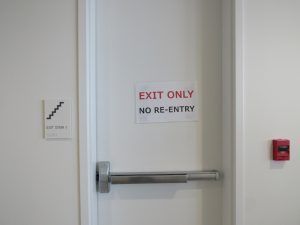5 Strategies for Effective Attendance Management
 Imagine this: your company, once a team of fewer than 15 employees, has now tripled in size. The manual sign-in process that used to be a breeze has become a daily bottleneck. Employees form lines to log their hours, and the stack of time sheets on your desk grows taller. Keeping track of attendance has become a time-consuming nightmare. Soon after, you realize that the manual attendance system that once served your small team is no longer efficient. The inaccuracies, delays, and administrative overhead are starting to impact productivity. It’s clear your growing company needs an efficient attendance management solution.
Imagine this: your company, once a team of fewer than 15 employees, has now tripled in size. The manual sign-in process that used to be a breeze has become a daily bottleneck. Employees form lines to log their hours, and the stack of time sheets on your desk grows taller. Keeping track of attendance has become a time-consuming nightmare. Soon after, you realize that the manual attendance system that once served your small team is no longer efficient. The inaccuracies, delays, and administrative overhead are starting to impact productivity. It’s clear your growing company needs an efficient attendance management solution.
In this blog, we’ll explore 5 Strategies for Effective Attendance Management to help you navigate this transition smoothly. From selecting the right software to integrating it seamlessly into your daily operations. These strategies will set your company on the path to success, allowing you to focus on growing your business.
1. Set Clear Attendance Policies
Often, employees may delay clocking in or out due to various reasons, such as being in the restroom right before their shift starts or waiting for their colleagues to finish. These delays can lead to longer lines and may result in not everyone being clocked in or out on time. To address this, establish and communicate clear attendance policies to your team. For instance, you might implement a policy that restricts restroom breaks within ten minutes of the end of a shift or other similar measures. Clearly outlining these policies will help streamline attendance management and reduce disruptions.
2. Integrate an Attendance Management Software

Integrating an attendance management software to your company’s operations is a game-changer. You should look at a software that offers features such as time tracking, automated reporting, and easy integration with existing systems. Stratus-io Attendance Management Software offers a comprehensive solution tailored to meet these companies’ needs and more. You can automatically record employees’ work hours without the need for manual entry and more. Integrating a system like this will bring many benefits to your growing company!
3. Leverage Geofence Capabilities

In today’s evolving technological landscape, Geofence technology has emerged as a game-changer for attendance management. Geofence technology is a great way to improve your management. It works by setting up virtual boundaries around your workplace, so when employees enter or leave these boundaries, their attendance is automatically recorded. This means no more manual clock-ins or outs, reducing errors and saving time. Many attendance systems incorporate geofence capabilities to enhance precision and streamline processes. To learn more about how geofencing can help, check out our latest blog.
4. Generate Comprehensive Reports
We are all aware of the importance of reports. Whether they are for sales, social media, or other operational aspects, reports help us understand and improve our performance. Similarly, in attendance management, generating comprehensive reports is crucial. Detailed attendance reports provide insights into employee punctuality, trends, and labor costs. By analyzing these reports, you can identify patterns, address issues proactively, and ensure compliance with company policies. Automated reporting features in modern attendance systems can save you time and offer valuable data, enabling you to make informed decisions and optimize workforce management.
5. Implement a Reliable Communication System
A smooth attendance management process relies heavily on effective communication.Make sure that there is a reliable system for employees to report absences, request time off, and notify their supervisors of any attendance issues. This could include an integrated communication tool within your attendance management software or a separate platform for ease of access. Regular updates and reminders about attendance policies and system changes will keep everyone informed and accountable. A clear and accessible communication system helps reduce misunderstandings related to attendance.
Conclusion
In conclusion, as your company evolves, so should your approach to attendance management. Gone are the days of long queues and manual timesheets.The strategies we’ve discussed are here to guide you through a seamless transition to more effective practices. Think of these strategies as your toolkit for turning attendance management from a bottleneck into a streamlined process. Embrace these solutions, and you’ll soon find that managing attendance becomes a breeze!






